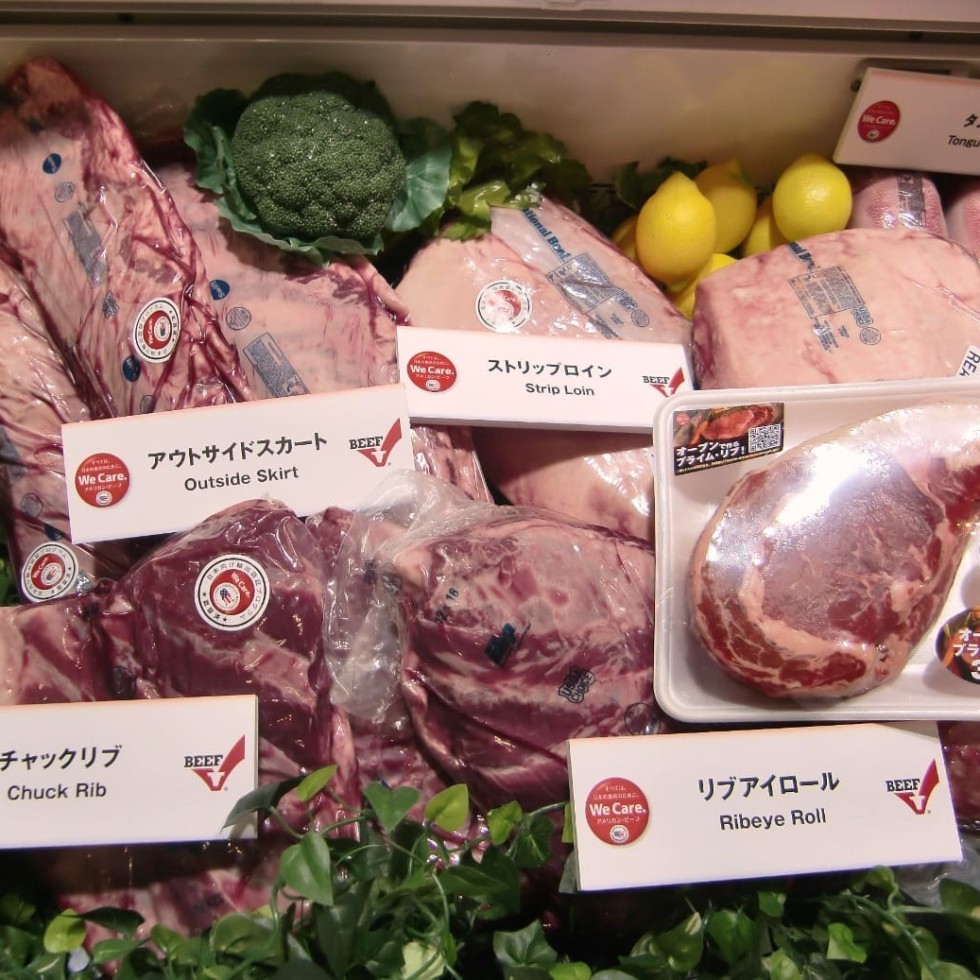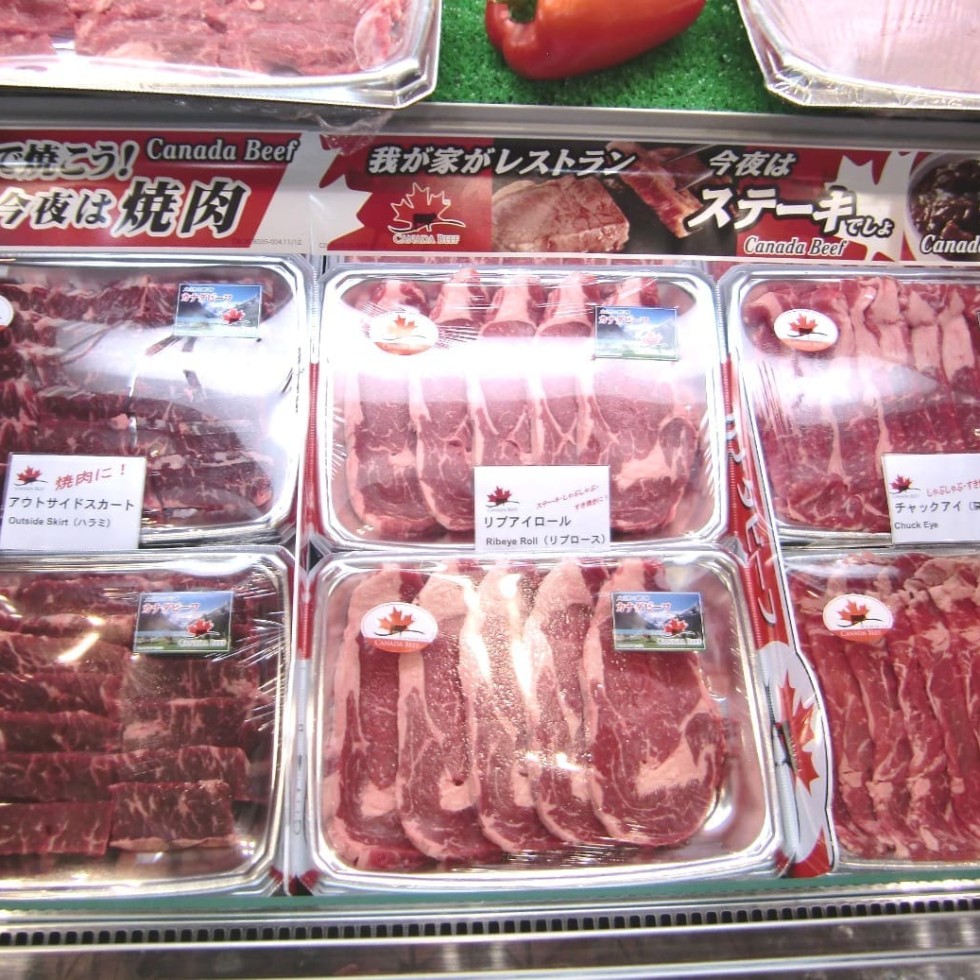 Anybody looking for evidence of an increased appetite for beef trade into Japan from US exporters need look no further than Tokyo’s enormous FoodEx trade exhibition, being staged this week.
Anybody looking for evidence of an increased appetite for beef trade into Japan from US exporters need look no further than Tokyo’s enormous FoodEx trade exhibition, being staged this week.
The event this year includes an extensive and prominent presence from the US Meat Export Federation, working collaboratively with a list of commercial US packers wishing to more heavily target Japan, once the 20-month age-limit shackles come off.
Some of the US stakeholders present at FoodEx this week included National Beef, JBS-Swift, Atlantic, Torex and Hormel.
Other potential supplier countries like Mexico, Canada, Chile, Brazil and Uruguay have also boosted their presence at FoodEx this year, local sources say, either through processed, value-added items or fresh.
FoodEx is one of the world’s largest food trade exhibitions, this year featuring displays from 1000 domestic Japanese food companies, plus another 1400 from 75 countries overseas. The displays cover a vast range of fresh and processed food and drink items.
Beef Central asked one of its long-standing Japanese contacts, retired meat trader Tadaharu ‘Bully’ Kohno, to visit the event on our readers' behalf to gauge the momentum behind the US push for trade, as well as that of other potential suppliers.
He reports that talk about expanded US re-entry following the much-mooted approval of an extension in age limit for US beef from 20 to 30 months was a key discussion point around the exhibition’s meat precinct.
While US commercial beef players backed by US MEF had a strong presence at FoodEx, other potential suppliers like Canada were also prominent, advocating their product as ‘clean and fresh’, showcasing thick loin portions ideal for Japanese yakiniku-style barbecue cooking.
Mexico’s beef presence included exporters, Carson Beef, Santa Cecilia, Sukarne and Arias.
 Australia was represented by just two smaller non-packer exporters – Top Cut Foods ( ex-Tender plus, displaying mostly prime lamb and veal and some Teys Australia beef); and Top Trading (ex JBS Tasmania, displaying grassfed beef and lamb). Mariani beef jerky also had a small presence.
Australia was represented by just two smaller non-packer exporters – Top Cut Foods ( ex-Tender plus, displaying mostly prime lamb and veal and some Teys Australia beef); and Top Trading (ex JBS Tasmania, displaying grassfed beef and lamb). Mariani beef jerky also had a small presence.
Australia has in recent times tended to direct its Japanese ‘exhibition’ resources in different directions, such as the Japanese Supermarket show and individual company meat shows, currently considered to have more commercial relevance than the FoodEx event.
Mr Kohno said popular items on display among beef exhibitors this year included barbecue cuts, both shoulder and ‘thick’ steak loin portions like rib-eye roll, striploin and tenderloin, and offal items including tongue and intestine also popular as marinated BBQ items.
Many exhibitors emphasised their products’ flavour, safety/security, healthy attributes, convenience and handling qualities.
“Trends this year included tight trimming lines, more convenient pack sizes to suit couples or singles rather than larger families, and some lines carrying pre-preparation such as seasoning,” Mr Kohno said.
He could see little evidence among displays of emerging segments like Certified Organic, yearling or product bearing ‘Natural’ claims, but detected some growth in veal, particularly milk-fed.
The strong US MEF presence appeared to be pushing hard to restore export volumes back to volumes above 200,000 tonnes, as it was prior to the discovery of BSE in 2003, up from about 110,000t last year.
The US display was emphasising to retail and food service customers that the US was able to supply necessary quantities of single cuts, at the time that customers wanted them, he said.
“Moreover, they and end consumers seem to have entirely forgotten the US BSE problem that emerged in December 2003, and the shipping/labelling and political problems between Japan and the US that occurred after that,” he said.
Timing of US expanded re-entry
MLA Japan region manager Melanie Brock said while the US had always maintained a strong presence at the FoodEx event, this year there appeared to be an elevated exposure that could only be linked to expectations about freer Japanese market access.
“Even during the depths of the ban on US beef due to BSE, they maintained a presence, but admittedly they had more pork supplies at that stage,” she said.
While earlier there was a strong view both in Japan and within the trade in Australia that US re-entry for beef from animals aged between 20 months and 30 months would happen in time for the start of Japan’s new fiscal year (April 1) that has now been dismissed as a possibility.
Some stakeholders now suggest that US access for older beef may not occur until much later in the year, possibly closer to Christmas.
That is based on the decision-making process that must unfold from here. The Japanese Prion technical meeting held late last month decided to call on five separate specialist technical sub-committees to consider the various BSE safety aspects of older beef from the US.
Because each of these sub-committees need to report back to the main technical committee, which will in turn report to Japan’s Public Food Safety Commission, there is now a view emerging that timing will take longer than earlier anticipated. Some in the trade are now convinced that the more liberal US trade will not start until closer to year’s-end.
Japan’s beef consumption typically reaches a peal during northern hemisphere summer months, suggesting there might be a risk that US expanded trade might miss that supply window.
The timing of expanded US access has implications for beef supply out of Australia, as Japanese traders may not want to get caught with higher priced product once access to competitively-priced US beef is made easier.
If the predictions about US market access prove true, it would go close to completing a 10-year cycle for US ban or greatly restricted supply into the Japanese market, since the original discovery of BSE in 2003.
-
Sunday marked the one-year anniversary of the Tsunami and earthquake that devastated large areas of north-eastern Japan. Some see the passing of the 12-month cycle as a psychological milestone, signalling that the nation has moved-on, and this may be reflected in returns to higher beef consumption. There have been some recent encouraging signals in trading performance in the nation’s retail sales and the convenience store sector in particular.
